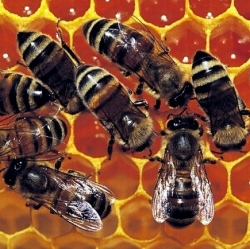
Birds, bees, lizards, elephants, and chimpanzees all share a survival trait: They self-medicate. They eat things that make them feel better, or prevent disease, or kill parasites like flatworms, bacteria, and viruses, or to aid in digestion. Even creatures with brains the size of pinheads somehow know to ingest certain plants or use them when they need them.
The science of animal self-medication is called zoopharmacognosy, derived from the roots zoo (“animal”), pharma (“drug”), and gnosy (“knowing”). It’s not clear how much knowing or learning is involved, but many animals seem to have evolved an innate ability to detect the therapeutic constituents in plants. Although the evidence is entirely circumstantial, the examples are plentiful. The practice is spreading across the animal kingdom in sometimes surprising ways
Most studies of animal self-medication, however, are in the great apes. In the 1960s, the Japanese anthropologist Toshisada Nishida observed chimpanzees in Tanzania eating aspella leaves, which had no nutritional value. Harvard primatologist Richard Wrangham saw the same behavior at Jane Goodall’s Gombe reserve, where chimps were swallowing leaves whole. Other scientists noted the same in other chimp colonies. Without chewing, the animals weren’t getting much nutritional benefit. So why do it?
In 1996, biologist Michael Huffman suggested the chimps were self-medicating. Huffman, an American who has worked for years in Japan at the Primate Research Institute at Kyoto University, first saw a parasite-ridden, constipated chimpanzee in Tanzania chew on the leaves of a noxious plant it would normally avoid. By the next day, the chimpanzee was completely recovered
